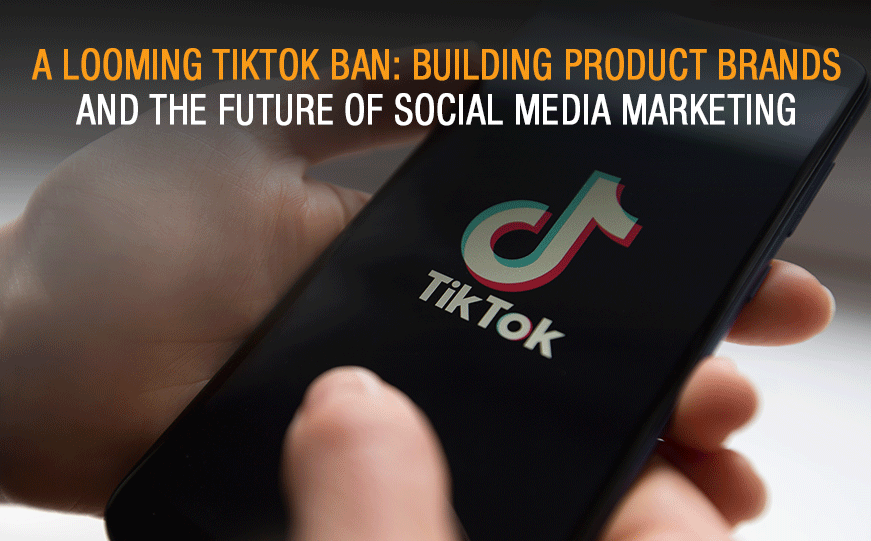Lawmakers across the West long have been concerned about TikTok’s ties to China. They fear that a competitive government posture could access user data. Or use the platform for propaganda.
In March, the US House of Representatives passed a bill that would require TikTok’s parent company, ByteDance, to sell the app to a US-approved buyer within a year… or face a ban. With legislation signed in April, the US joins other allies including Britain, Canada and New Zealand in restricting the app.
In response, a much-anticipated lawsuit was filed this week… and the situation likely could end up before the Supreme Court.
ByteDance claimed in its suit, “For the first time in history, Congress has enacted a law that subjects a single, named speech platform to a permanent, nationwide ban, and bars every American from participating in a unique online community with more than 1 billion people worldwide.”
Whatever the eventual outcome, the potential ban of TikTok has sent shockwaves through the marketing universe. And just when the builder products channel has begun gaining some notable momentum on the platform… many brands now are caught in a highly guarded stance.
After all, they’re seeking best practice to navigate a path forward with challenges – and opportunities – for their social media engagement strategy.
A Brief History: The Rise of Short-Form Video and the Power of TikTok
Short-form video content has become a dominant force in social media. Platforms like TikTok – with its focus on bite-sized, engaging videos – have captured the attention of billions of engaged users. This shift presents a unique opportunity for Building Product Brands.
In fact, Milwaukee Tool has become an TikTok power user. The brand has achieved significant success on the app by showcasing the power and function of their tools… in creative (and dare we say, humorous) short-form videos.
Which not only generate brand awareness. But also educate potential “pro” customers about product features – and benefits – in a way that resonates with emerging audiences.
The Impact of a Ban: Loss of Audience and Engagement
A TikTok ban would undoubtedly disrupt marketing strategies… which have leveraged the platform’s experiential opportunities. Brands who have built a strong presence on TikTok risk losing access to valuable audiences. And the high engagement rates that the platform – and its algorithm – maintains.
The challenge extends beyond mere audience size. Studies by Capterra indicate that 82% of marketers believe a TikTok ban “would significantly impact” achieving their social media goals. This highlights the platform’s effectiveness in driving brand awareness, sales… and customer insights.
The Silver Lining: Shifting Strategies and Alternative Platforms
Five Tips for building materials marketing to adapt and thrive in this evolving landscape:
- Embrace Platform Agnosticism: Don’t become overly reliant on any single platform. Develop a multi-platform social media strategy – that leverages the strengths of different channels – including industry-specific forums.
- Adapt Content Strategies: Short-form video content is certainly here to stay. Consider repurposing successful TikTok-style content for platforms like Instagram Reels, YouTube Shorts and LinkedIn Stories.
- Focus on Community Building: Foster genuine connections with every audience member. Host live Q&A sessions. Engage in industry discussions. And participate within relevant online communities.
- Invest in Organic Growth: Building a strong organic presence is crucial. Create high-quality content that provides value to prospects. For example, in educational tutorials. Product demonstrations. And “behind-the-scene” reveals into company culture. TikTok is far from the only platform useful to increase building material sales.
- Leverage Influencer Marketing: Partner with industry influencers – and thought leaders – to reach a wider audience. And for building trust. Seek influencers who align with brand values. While resonating effectively with target audiences.
Protecting Brand and Intellectual Property
A social media platform ban is just one potential disruption. Here are some best practices to safeguard brand standards and protect intellectual property in virtually any marketing environment:
- Own Content: Don’t rely solely on third-party platforms to host content. Maintain a strong brand presence on micro-sites and landing pages… especially where the company controls the narrative, tone and messaging.
- Develop a Strong Brand Identity: A clear and consistent brand identity transcends platforms. Invest in creating high-quality visual assets. Maintaining messaging guidelines. And ensuring that a brand voice truly resonates.
- Secure Trademarks and Copyrights: Apply for brands and sub-brands to preserve the legal rights to names, logos and other intellectual property… to protect against potential unauthorized use and exploitation.
- Stay Informed: Keep marketing teams up-to-date with the latest trends and regulations in social media marketing. This allows the freedom to adapt strategies – even in changing environments – and proactively mitigate potential risks.
Of course, some brands remain a bit anxious about the potential ban. After all, uncertainty presents challenges – but it’s also an opportunity to diversify and strengthen – social media presence. By embracing platform agnosticism, while creating engaging content. And by prioritizing community building… it’s possible to thrive in this ever-evolving social media landscape. Don’t get caught flat-footed or lack the confidence that a potential platform ban threatens. As is typically the case… a good defense is a strong offense. Begin action, today, to build a resilient and adaptable marketing strategy for the future.
If you’d like to explore how social media platforms can be more fully integrated into a robust marketing strategy for your 2025 planning, now is the perfect time to propel forward. Send an email to Steve at sk@kleberandassociates.com to get the conversation started.




